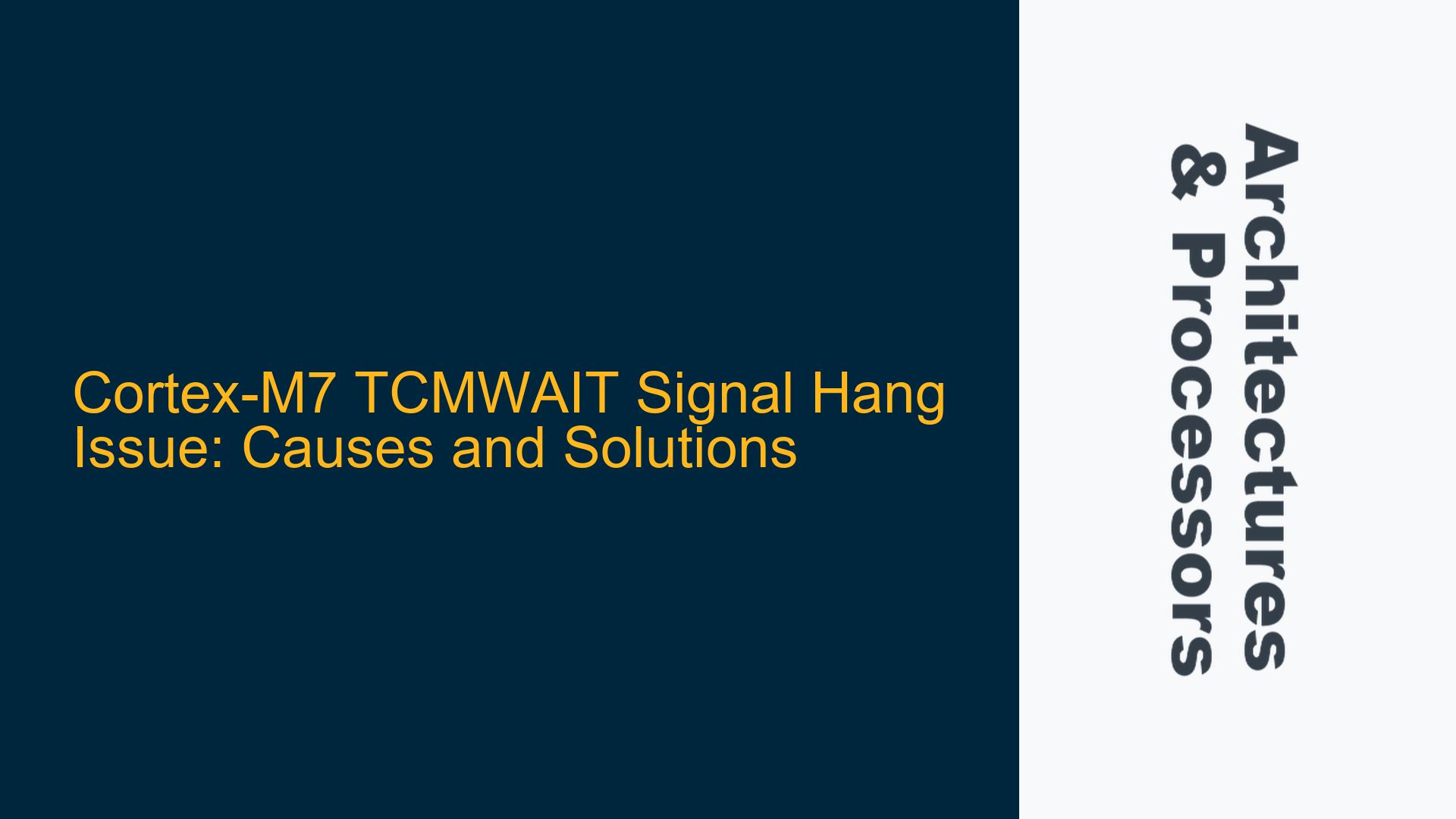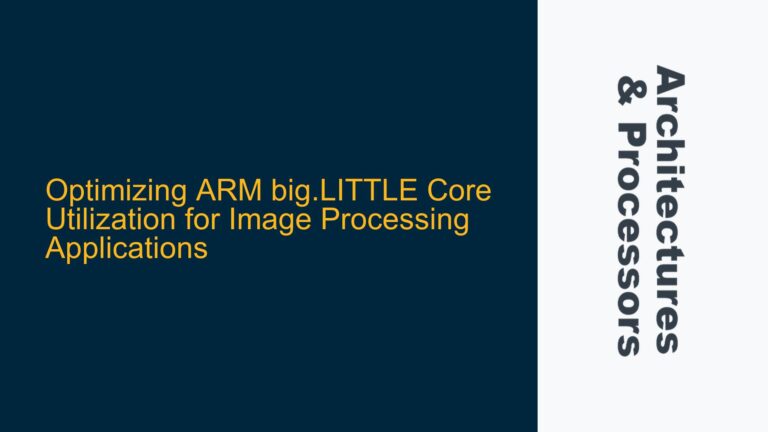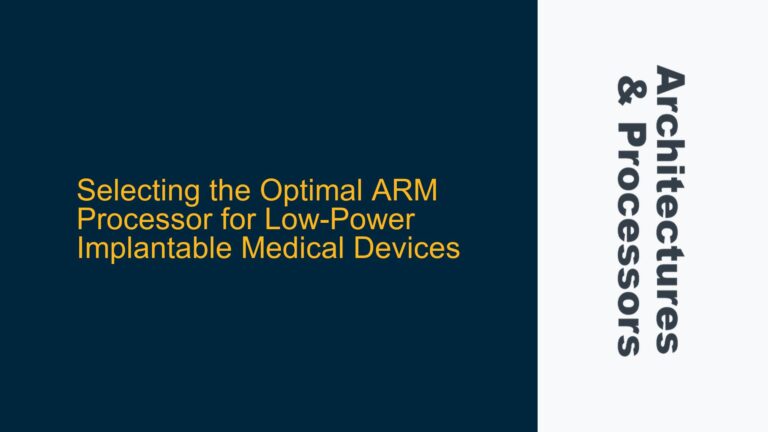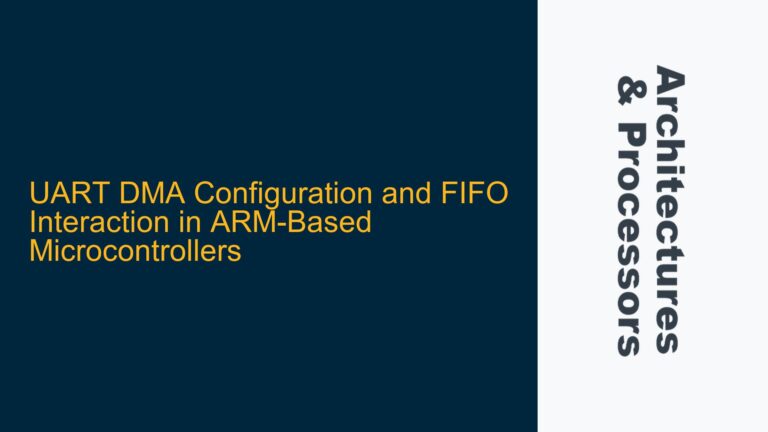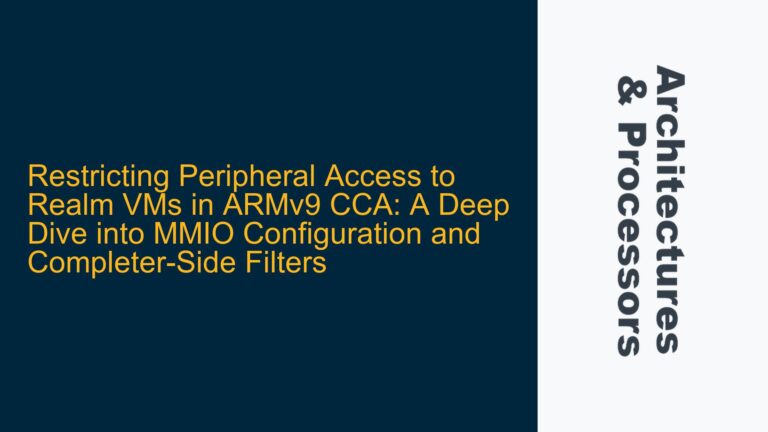Cortex-M7 TCMWAIT Signal Behavior and System Hang
The Cortex-M7 processor, known for its high performance and efficiency, utilizes Tightly Coupled Memory (TCM) for low-latency access to critical data and instructions. The TCM interface includes the TCMWAIT signal, which is used to handle multi-cycle memory accesses. When the TCMWAIT signal is asserted, the processor stalls, waiting for the memory operation to complete. However, in certain scenarios, the Cortex-M7 can hang when the TCMWAIT signal remains high, preventing further execution and making debugging difficult, as external tools like TRACE-32 cannot connect to the processor.
This issue typically arises when the TCMWAIT signal is not deasserted correctly, causing the processor to wait indefinitely. The problem is exacerbated when both ITCMWAIT (Instruction TCM Wait) and DTCMWAIT (Data TCM Wait) signals are held high simultaneously, leading to a complete system stall. Understanding the root causes of this behavior and implementing appropriate fixes is crucial for ensuring reliable operation of Cortex-M7-based systems.
Memory Access Timing and TCMWAIT Signal Management
The TCMWAIT signal is designed to handle memory accesses that require multiple cycles to complete. When the processor accesses TCM memory, the external memory controller asserts the TCMWAIT signal to indicate that the data or instruction is not yet ready. The processor then stalls until the TCMWAIT signal is deasserted. However, several factors can lead to the TCMWAIT signal remaining high, causing the processor to hang.
One possible cause is improper timing in the memory controller. If the memory controller does not deassert the TCMWAIT signal within the expected number of cycles, the processor will continue to wait indefinitely. This can occur due to incorrect configuration of the memory controller, timing violations, or unexpected delays in the memory subsystem.
Another potential cause is contention between multiple memory accesses. If the processor attempts to access both ITCM and DTCM simultaneously, and both memory controllers assert their respective TCMWAIT signals, the processor may hang if the signals are not managed correctly. This is particularly problematic in systems with long-latency memory, where the memory access time can vary significantly.
Additionally, the issue may be related to the handling of cache coherency and memory barriers. The Cortex-M7 includes a cache system that can introduce additional complexity to memory access timing. If the cache is not properly managed, it can lead to situations where the TCMWAIT signal is not deasserted as expected. For example, if a cache line fill operation is delayed due to cache coherency issues, the TCMWAIT signal may remain high, causing the processor to hang.
Implementing Proper TCMWAIT Signal Handling and Debugging Techniques
To resolve the Cortex-M7 TCMWAIT signal hang issue, it is essential to implement proper signal handling and debugging techniques. The following steps outline a comprehensive approach to diagnosing and fixing the problem.
Step 1: Verify Memory Controller Configuration
The first step in troubleshooting the TCMWAIT signal hang issue is to verify the configuration of the memory controller. Ensure that the memory controller is correctly configured to handle the expected memory access timing. This includes checking the timing parameters, such as the number of wait states, and ensuring that the memory controller is capable of deasserting the TCMWAIT signal within the required number of cycles.
If the memory controller is not configured correctly, it may fail to deassert the TCMWAIT signal, causing the processor to hang. Review the memory controller documentation and adjust the configuration as necessary to ensure that the TCMWAIT signal is managed properly.
Step 2: Analyze Memory Access Patterns
Next, analyze the memory access patterns of the application to identify any potential contention between ITCM and DTCM accesses. If the application frequently accesses both ITCM and DTCM simultaneously, it may be necessary to implement additional synchronization mechanisms to prevent contention.
One approach is to use memory barriers to ensure that memory accesses are properly ordered. Memory barriers can be used to enforce a specific order of memory operations, preventing situations where both ITCMWAIT and DTCMWAIT signals are asserted simultaneously. Additionally, consider optimizing the application to minimize simultaneous accesses to ITCM and DTCM, reducing the likelihood of contention.
Step 3: Implement Cache Management Strategies
Cache management is critical in systems with TCM, as improper cache handling can lead to unexpected delays in memory access. Ensure that the cache is properly configured and managed to avoid situations where cache line fill operations delay the deassertion of the TCMWAIT signal.
One effective strategy is to use cache invalidate and clean operations to maintain cache coherency. If the cache contains stale data, it may delay the completion of memory accesses, causing the TCMWAIT signal to remain high. Implement cache invalidate and clean operations as needed to ensure that the cache does not interfere with TCM memory accesses.
Step 4: Use Debugging Tools to Monitor TCMWAIT Signal
To diagnose the TCMWAIT signal hang issue, use debugging tools to monitor the behavior of the TCMWAIT signal. Tools like TRACE-32 can be used to capture the state of the TCMWAIT signal and other relevant signals during system operation. This can help identify the exact point at which the TCMWAIT signal is asserted and not deasserted, providing valuable insight into the root cause of the issue.
If the processor is unresponsive and debugging tools cannot connect, consider using hardware-based debugging techniques, such as logic analyzers or oscilloscopes, to monitor the TCMWAIT signal directly. This can provide a real-time view of the signal behavior and help identify timing issues or other anomalies.
Step 5: Implement Data Synchronization Barriers
Data synchronization barriers (DSBs) can be used to ensure that all memory accesses are completed before proceeding to the next instruction. Implementing DSBs can help prevent situations where the TCMWAIT signal remains high due to incomplete memory operations.
For example, if a memory access is delayed due to cache coherency issues, a DSB can be used to ensure that the access is completed before the processor continues execution. This can help prevent the TCMWAIT signal from remaining high and causing the processor to hang.
Step 6: Review and Optimize Firmware
Finally, review and optimize the firmware to ensure that it is not contributing to the TCMWAIT signal hang issue. Look for any code that may be causing excessive memory accesses or contention between ITCM and DTCM. Optimize the code to minimize memory accesses and ensure that memory operations are properly synchronized.
Consider using profiling tools to identify any performance bottlenecks or areas where memory access patterns can be improved. By optimizing the firmware, you can reduce the likelihood of encountering the TCMWAIT signal hang issue and improve overall system performance.
Conclusion
The Cortex-M7 TCMWAIT signal hang issue is a complex problem that can arise due to a variety of factors, including improper memory controller configuration, contention between ITCM and DTCM accesses, and cache management issues. By following the troubleshooting steps outlined above, you can identify and resolve the root cause of the issue, ensuring reliable operation of your Cortex-M7-based system.
Implementing proper TCMWAIT signal handling, optimizing memory access patterns, and using debugging tools to monitor signal behavior are key to resolving this issue. Additionally, implementing data synchronization barriers and optimizing firmware can help prevent the TCMWAIT signal from remaining high and causing the processor to hang. By taking a comprehensive approach to troubleshooting and optimization, you can ensure that your Cortex-M7 system operates efficiently and reliably.
